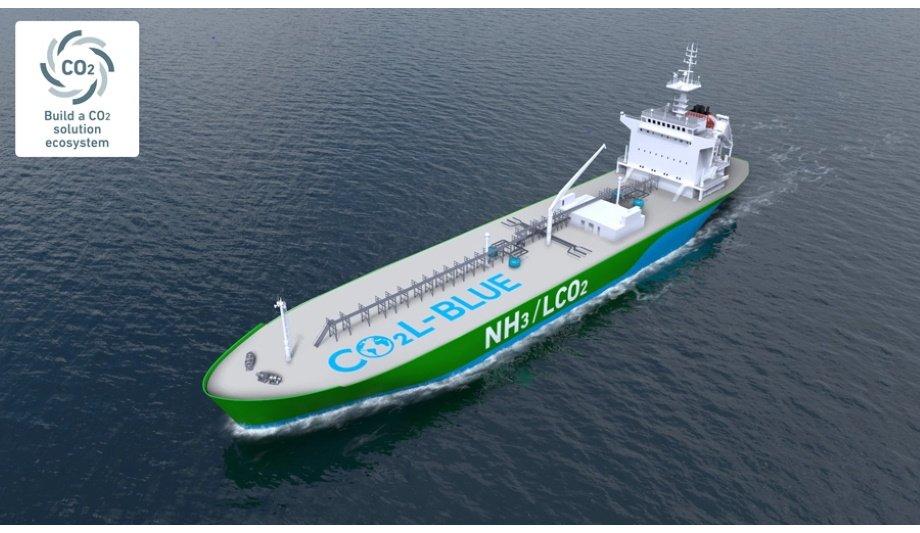Mitsubishi Shipbuilding, a part of Mitsubishi Heavy Industries (MHI) Group, based in Yokohama, Japan, has completed a conceptual study for the design of an ‘Ammonia/Liquefied CO2 Carrier’, which is capable of transporting both ammonia and liquefied carbon dioxide (LCO2).
The extensive study conducted with Mitsui O.S.K. Lines, Ltd. provides the basis for a type of vessel with the potential to become mainstream in the LCO2 carrier market, by flexibly meeting the projected increase in demand for transporting ammonia and LCO2.
Ammonia, a stable clean energy source
Ammonia is a source of stable clean energy projected to be used widely in the future
Ammonia is a source of stable clean energy projected to be used widely in the future and LCO2 carriers play an important role in the carbon dioxide capture, utilisation, and storage (CCUS) value chain, which is attracting attention as a means to achieve a decarbonised world, by providing a way to efficiently transport recovered LCO2 to storage sites and facilities for effective utilisation.
Mitsubishi Heavy Industries (MHI) Group estimates that the volume of CO2 reduction due to CCUS will amount to 4.3 to 13.0 billion tonnes annually by 2050.
Conceptual study of Ammonia/Liquefied CO2 Carrier
The vessel for transporting ammonia and LCO2, developed through this conceptual study, is designed to carry ammonia on its outward journey and LCO2 on the return trip. Specific carriers for each material normally run empty on their return voyage, so a ship able to handle both substances will increase operational efficiency, and contribute to enhanced transport efficiency overall.
Mitsubishi Shipbuilding will continue to further develop the technology, based on the knowledge acquired and technical issues encountered through this project, and in cooperation with marine-related corporations and petroleum development corporations, aims to commercialise the vessel.
Mitsubishi Shipbuilding will continue to develop various types of ships based on this design
In addition, considering the entire value chain, Mitsubishi Shipbuilding will continue to develop various types of ships based on this design, in order to respond flexibly to customer needs.
MARINE FUTURE STREAM vision 2050
As an integral part of MHI Group’s energy transition strategy, Mitsubishi Shipbuilding has established the MARINE FUTURE STREAM vision for 2050 in the ship and marine sector, setting the goals of ‘a decarbonised marine world’, through autonomous operation and electrification, and ‘effective utilisation of the marine space’, through renewable energy and the carbon cycle, and working to generate and implement ideas for marine-related innovation.
Going forward, as a marine systems integrator, Mitsubishi Shipbuilding will continue to actively develop and commercialise LCO2 carriers, build a CCUS value chain spanning land and sea, and strive to realise a decarbonised world.
